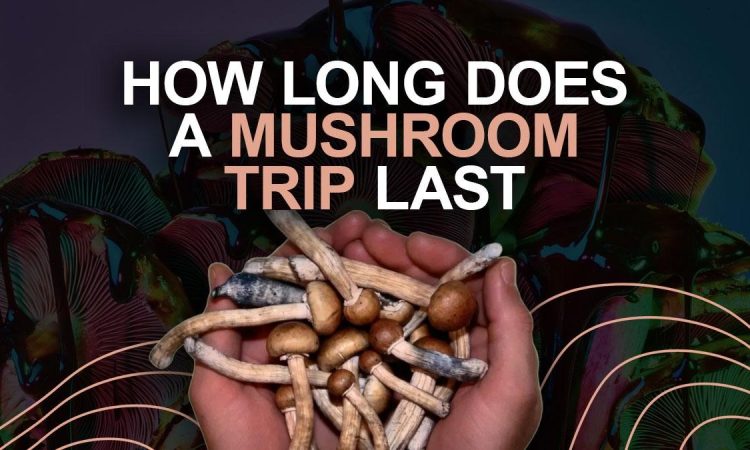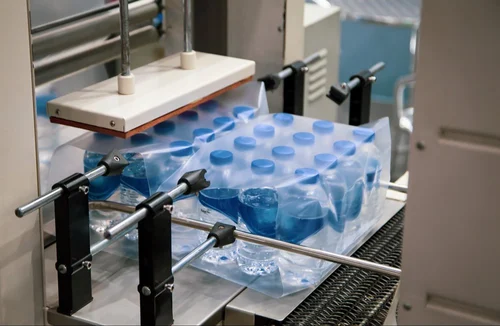
Are you curious about the mystical world of magic mushrooms? Ever wondered how long the psychedelic journey lasts?
Prepare to dive deep into the realm of shrooms and discover everything you need to know about the duration and intensity of a mushroom trip.
From mind-altering effects to legal considerations, this article has it all!
What Are Magic Mushrooms?
Magic mushrooms, also known as shrooms, are a type of fungi containing psychoactive compounds such as psilocybin and psilocin.
When ingested, these compounds produce profound alterations in perception, mood, and consciousness, leading to a psychedelic experience often characterized by visual hallucinations, introspective insights, and cosmic revelations.
Magic mushrooms for depression have been used for centuries in various cultural and spiritual practices, and they continue to be studied for their potential therapeutic benefits, particularly in the treatment of mental health disorders such as depression and anxiety.
However, it’s important to approach their use with caution and respect, as they can also lead to adverse effects and risks, especially when consumed irresponsibly or in high doses.
How Do Mushrooms Affect the Body?
Once consumed, magic mushrooms are rapidly metabolized by the body, with psilocybin converting into psilocin, the primary psychoactive compound responsible for the hallucinogenic effects.
Psilocin interacts with serotonin receptors in the brain, disrupting normal brain activity and leading to altered states of consciousness.
How Long Does Shroom Take To Kick In?
The onset of a shroom trip varies depending on several factors, including dosage, metabolism, and individual sensitivity. Typically, effects begin to manifest within 20 to 60 minutes after ingestion, with peak intensity reached within 2 to 3 hours.
How Long Does a Shroom Trip Last?
The duration of a mushroom trip can vary widely, but on average, the effects of psilocybin last between 4 to 6 hours.
However, factors such as dosage, individual metabolism, and environmental factors can influence the length and intensity of the experience.
Shroom Half Cycle
After the peak of the trip, the effects of psilocybin gradually decline, entering a phase known as the “half cycle.”
During this period, users may experience a gradual return to baseline consciousness, with lingering perceptual changes and feelings of introspection lasting several hours.
How Does Shroom High Feel Like?
The shroom high is often described as a profound and mystical experience, characterized by enhanced sensory perception, altered thought patterns, and profound introspection.
Users may experience vivid visual hallucinations, intense emotional highs and lows, and a sense of interconnectedness with the universe.
Shroom Dosing: Start Low and Go Slow
When experimenting with magic mushrooms, it’s essential to approach dosing with caution. Start with a low dose and gradually increase over time to gauge your sensitivity and tolerance levels.
Remember, it’s always better to err on the side of caution and start low than to risk an overwhelming experience.
Factors That Influence the Duration and Intensity of Shrooms
Several factors can influence the duration and intensity of a mushroom trip:
- Dosage: The amount of psilocybin consumed directly correlates with the intensity and duration of the trip. Higher doses typically result in more profound effects and longer-lasting experiences, while lower doses may produce milder effects with a shorter duration.
- Mushroom Species: Different species of magic mushrooms contain varying levels of psychoactive compounds, leading to differences in potency and duration. Some species may produce more intense trips that last longer, while others may have milder effects and shorter durations.
- Individual Metabolism and Body Mass: Metabolic rate and body weight can affect how quickly psilocybin is metabolized and excreted from the body. Individuals with faster metabolisms or lower body weights may experience quicker onset and shorter durations of effects compared to those with slower metabolisms or higher body weights.
- Consumption Method: The method of ingestion can also influence the onset and duration of a mushroom trip. Consuming mushrooms on an empty stomach may lead to faster absorption and onset of effects compared to consuming them with food. Additionally, consuming mushrooms in the form of mushroom coffees, teas or extracts or mushroom gummies may result in quicker absorption and potentially shorter durations of effects.
- Environmental Factors: External factors such as setting, mood, and mindset can significantly impact the subjective experience of a mushroom trip.
A comfortable and supportive environment, positive mood, and open mindset can enhance the overall experience and potentially prolong the duration of effects.
Conversely, stressful or uncomfortable surroundings, negative emotions, or anxious thoughts may shorten the duration or intensify the effects of the trip.
Overall, the duration and intensity of a mushroom trip can vary widely depending on these factors, as well as individual differences in sensitivity and tolerance.
It’s important to approach mushroom use with caution, start with a low dose, and be mindful of the potential risks and effects associated with psychedelic experiences.
How Long Do Shrooms Stay in Your System?
After ingestion, psilocybin can be detected in various bodily fluids and tissues for a limited period. Detection times can vary depending on factors such as dosage, frequency of use, and the sensitivity of the testing method.
Shroom Test
The shroom test refers to various methods used to detect the presence of psilocybin, the psychoactive compound found in magic mushrooms, in biological samples such as urine, blood, or hair.
These tests are often conducted for purposes such as drug screening, forensic analysis, or medical monitoring. Here are the main types of shroom tests:
- Urine Test: Urine tests are the most common method for detecting psilocybin use. They involve collecting a urine sample and analyzing it for the presence of psilocybin or its metabolites. Psilocybin can typically be detected in urine for up to 24 hours after ingestion, depending on factors such as dosage and frequency of use.
- Blood Test: Blood tests can also be used to detect psilocybin, although they are less common than urine tests. Blood samples are collected and analyzed for the presence of psilocybin or its metabolites. Psilocybin is rapidly metabolized and eliminated from the bloodstream, with detection windows ranging from a few hours to one day.
- Hair Test: Hair tests are a less common but more long-term method of detecting psilocybin use. Psilocybin and its metabolites can potentially be detected in hair follicles for several months following use. Hair samples are collected and analyzed for the presence of psilocybin or its metabolites, providing a longer detection window compared to urine or blood tests.
Factors Affecting Detection Time
Several factors can influence the detection time of psilocybin in biological samples such as urine, blood, or hair:
- Dosage: Higher doses of psilocybin may result in a longer detection window compared to lower doses. Larger doses can lead to higher concentrations of psilocybin and its metabolites in the body, prolonging the time it takes for them to be metabolized and excreted.
- Frequency of Use: Regular or frequent use of psilocybin-containing mushrooms can lead to the accumulation of psilocybin and its metabolites in the body, potentially extending the detection window. Chronic users may have detectable levels of psilocybin in their system for longer periods compared to occasional users.
- Metabolism: Individual differences in metabolism can affect how quickly psilocybin is metabolized and eliminated from the body. Factors such as metabolic rate, liver function, and overall health can influence the speed at which psilocybin and its metabolites are processed.
- Body Mass and Composition: Body weight and composition can also play a role in the metabolism and elimination of psilocybin. Individuals with higher body mass may metabolize psilocybin more slowly, leading to a longer detection window, while those with lower body mass may metabolize it more quickly.
- Hydration Level: Hydration status can impact the concentration of psilocybin and its metabolites in urine. Higher hydration levels may result in more dilute urine, potentially reducing the concentration of detectable substances and shortening the detection window.
- Detection Method: The sensitivity and specificity of the detection method used can influence the detection time of psilocybin. Different testing techniques may have varying detection limits and windows, affecting the accuracy and reliability of results.
- Sample Type: The type of biological sample collected for testing (e.g., urine, blood, hair) can also affect the detection time of psilocybin. Hair samples, for example, provide a longer detection window compared to urine or blood samples, as psilocybin and its metabolites can be incorporated into hair follicles over time.
Potential Side Effects of Psilocybin Use
While magic mushrooms are generally considered safe when used responsibly, excessive consumption or adverse reactions can lead to potential side effects such as:
- Nausea and vomiting
- Increased heart rate and blood pressure
- Anxiety and paranoia
- Panic attacks
- Psychotic episodes (in rare cases)
Legal Considerations and Status of Psilocybin
The legal status of psilocybin varies depending on location, with many countries imposing strict regulations on its production, distribution, and use.
While some jurisdictions have decriminalized or legalized psilocybin for medical or therapeutic purposes, it remains classified as a Schedule I controlled substance in many places.
Final Thoughts
The duration and intensity of a mushroom trip can vary depending on several factors, including dosage, metabolism, and individual sensitivity.
While magic mushrooms offer profound and transformative experiences for many users, it’s essential to approach their use with caution and respect.
By understanding the factors that influence the duration and intensity of a shroom trip, you can maximize the potential benefits while minimizing the risks.
Whether you’re embarking on a spiritual journey or seeking personal growth and introspection, magic mushrooms have the potential to unlock new realms of consciousness and expand your perception of reality.




